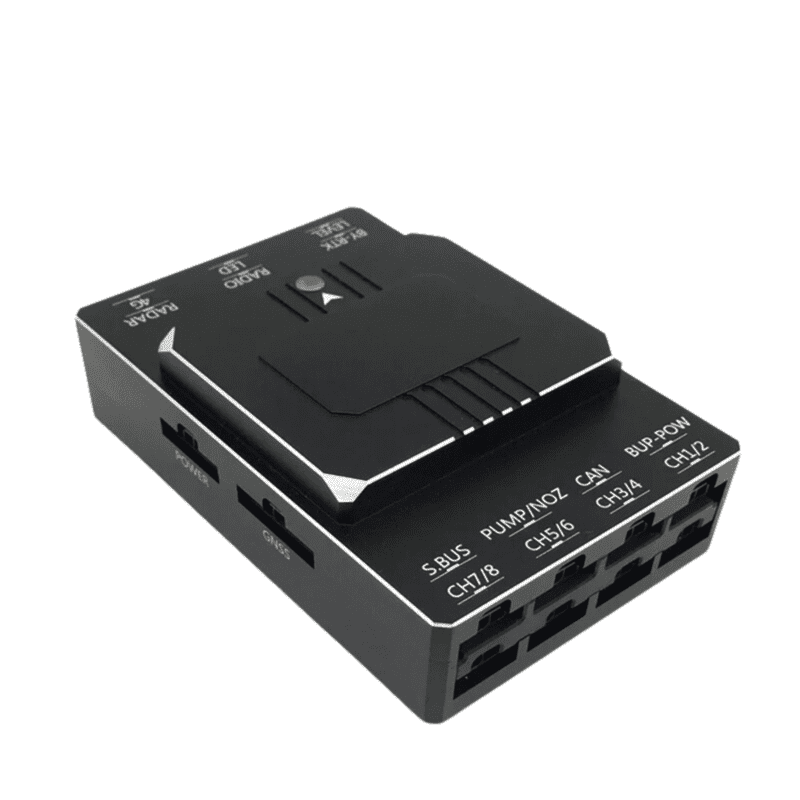Unrivaled Precision: SparkNavi Drone Flight Controller and GNSS/INS Made in Taiwan
Wiki Article
Recognizing the Essential Attributes and Features of a Drone Flight Controller for Optimum Aerial Performance
The flight controller offers as the essential part in a drone's architecture, managing its activities and making sure security through an advanced interplay of sensors and data handling. With advancements in modern technology, the landscape of trip controllers is quickly evolving, prompting a better exam of what truly specifies ideal functionality in this vital system.Overview of Flight Controllers
When checking out the globe of drone technology, recognizing flight controllers is crucial for both hobbyists and specialists alike. Trip controllers work as the brain of the drone, orchestrating its motions and guaranteeing stability during trip (SparkNavi drone flight controller and GNSS/INS made in taiwan). They refine data from numerous sensing units, consisting of accelerometers, measures, and gyroscopes, to keep stability and react to pilot inputs successfullyThe design of trip controllers can vary significantly, varying from standard versions created for entry-level drones to advanced systems furnished with advanced attributes for professional applications. The combination of GPS capacities allows exact navigation and positioning, while programmable firmware permits users to customize trip characteristics to match their specific demands.
Additionally, trip controllers are critical in helping with interaction in between the drone and the push-button control, allowing real-time adjustments and telemetry data transmission. Understanding the various kinds of trip controllers, consisting of multi-rotor, fixed-wing, and crossbreed systems, is important for picking the appropriate model for a given application. Eventually, an extensive understanding of flight controllers not just enhances the flying experience yet additionally makes best use of the performance and security of drone operations.
Key Functions of Flight Controllers
Trip controllers play a crucial duty in managing a drone's trip dynamics by carrying out a number of key features that make certain security and responsiveness. Among the key functions is the stablizing of the drone's positioning and altitude. This is attained through the combination of numerous sensing units, including barometers, accelerometers, and gyroscopes, which continually monitor the drone's setting and activity..png)
One more vital feature is the handling of control inputs from the pilot or independent systems. The flight controller translates these inputs and readjusts the drone's motor speeds appropriately to accomplish the wanted flight path. This consists of handling roll, pitch, and yaw, which are critical for ability to move.
Additionally, trip controllers are geared up with fail-safe systems. These functions are created to react to vital situations, such as reduced battery degrees or loss of signal, by initiating predefined actions like going back to the launch factor or floating in position.

Crucial Functions to Consider
Many vital functions ought to be taken into consideration when picking a drone trip controller to make certain optimum efficiency and reliability. One vital element is the controller's handling power, which determines its capability to handle complex trip algorithms and real-time data processing. A greater processing ability enhances responsiveness and security during trip.One more essential function is the variety of sustained flight settings. A functional flight controller ought to use numerous settings, including acro, altitude hold, and GPS-assisted settings, accommodating different pilot skill degrees and functional situations. In addition, the visibility of built-in safety features, such as fail-safes and geofencing, can significantly improve functional safety.
Compatibility with different communication protocols is additionally crucial, as it makes sure smooth assimilation with various other devices and peripherals, such as remote controllers and telemetry systems. Moreover, the controller's firmware need to be user-friendly and routinely updated to include new features and optimizations.
Assimilation With Sensing Units and Equipments
A flight controller's efficiency is greatly influenced by its ability to incorporate with different sensors and systems. This integration is vital as it enables the flight controller to obtain real-time data essential for efficient trip monitoring. hop over to here Key sensors consist of GPS, inertial dimension units (IMUs), measures, and magnetometers, each giving crucial information pertaining to the drone's alignment, altitude, and placement.
Furthermore, advanced trip controllers support assimilation with payload look at this now systems, consisting of cams and various other sensing units, allowing improved performances such as independent navigation and obstacle evasion. This interconnectedness not just boosts the drone's operational capacities however likewise increases its application possible across various sectors, from airborne digital photography to agricultural tracking. Therefore, a well-integrated flight controller is essential for attaining optimum aerial efficiency and ensuring the integrity of drone operations.
Tips for Optimizing Efficiency
To take full advantage of the performance of your drone, a number of key methods can be used that focus on optimizing both hardware and software parts. Make sure that the trip controller firmware is up to day.
Proper calibration lessens drift and enhances flight security, especially throughout facility maneuvers. Premium props can reduce drag and rise trip time.
Fine-tune your flight settings, consisting of PID (Symmetrical, Essential, Acquired) values, to attain smooth and responsive handling. By implementing these techniques, drone operators can dramatically boost airborne efficiency, leading to a much more satisfying and effective flying experience.
Conclusion
In final thought, a thorough understanding of drone trip controllers is imperative for enhancing aerial performance. By focusing on these elements, drivers can significantly raise the performance and integrity of their drone systems in varied applications.Flight controllers offer as the brain of the drone, managing its movements and making certain stability throughout flight.Flight controllers play a critical function in managing a drone's trip dynamics by carrying out a read the article number of vital functions that ensure stability and responsiveness. The trip controller translates these inputs and changes the drone's electric motor rates accordingly to attain the desired flight path.Numerous vital functions must be taken into account when selecting a drone trip controller to make certain optimum efficiency and dependability. Hence, a well-integrated trip controller is basic for achieving optimum airborne performance and ensuring the integrity of drone procedures.
Report this wiki page